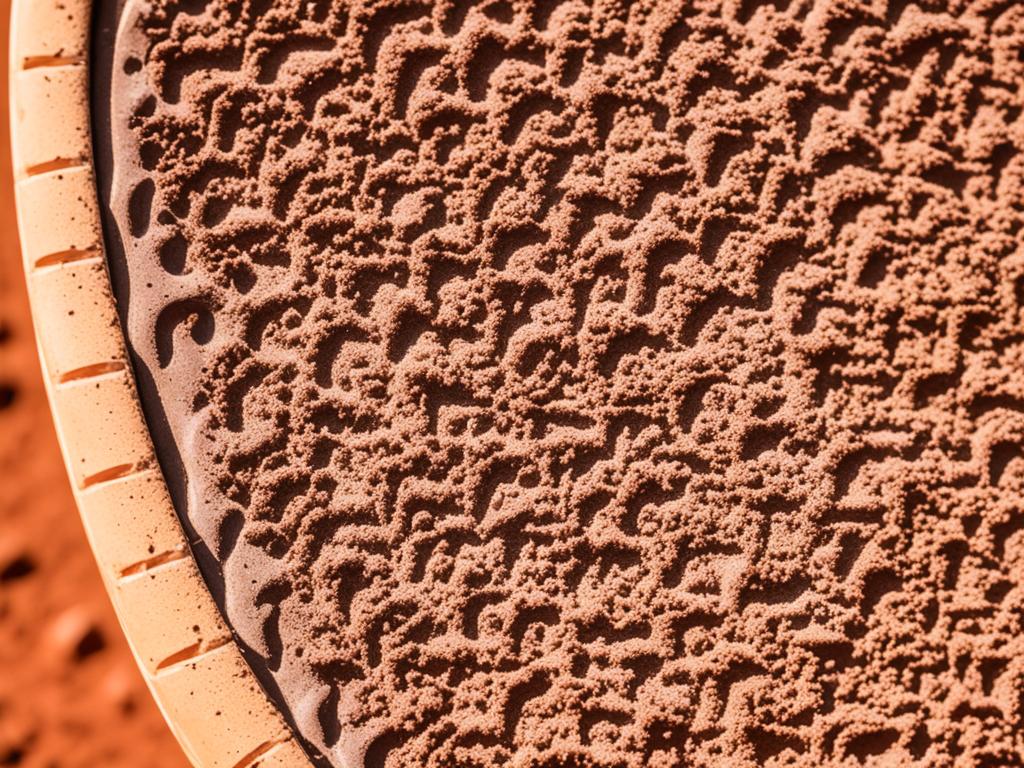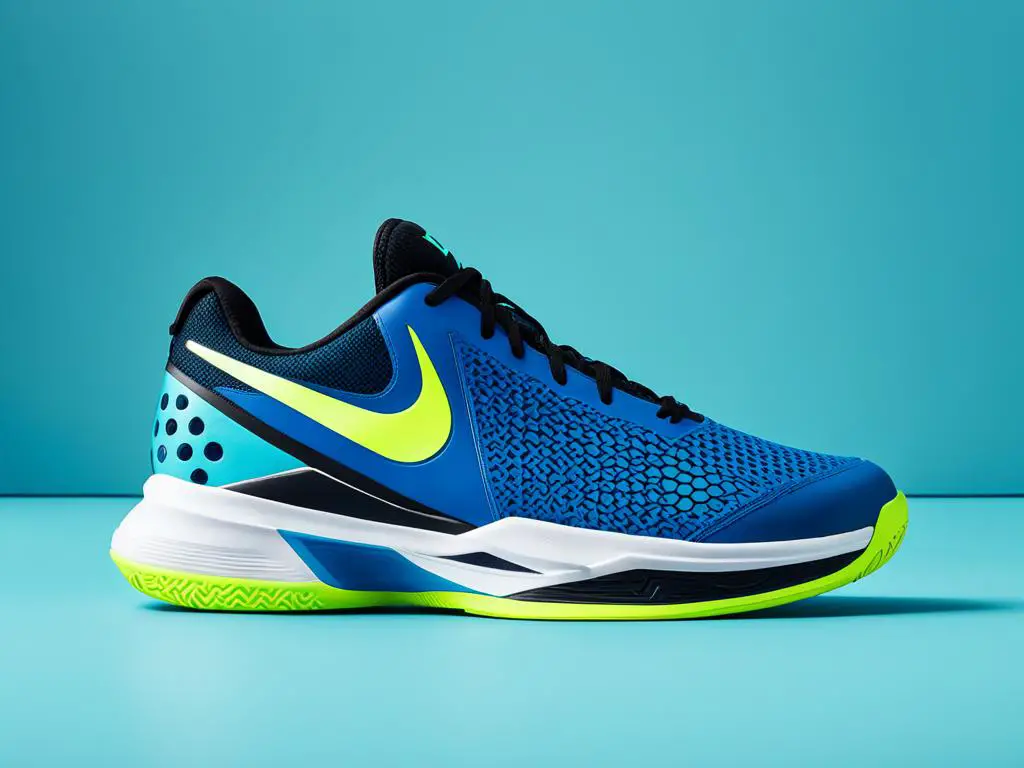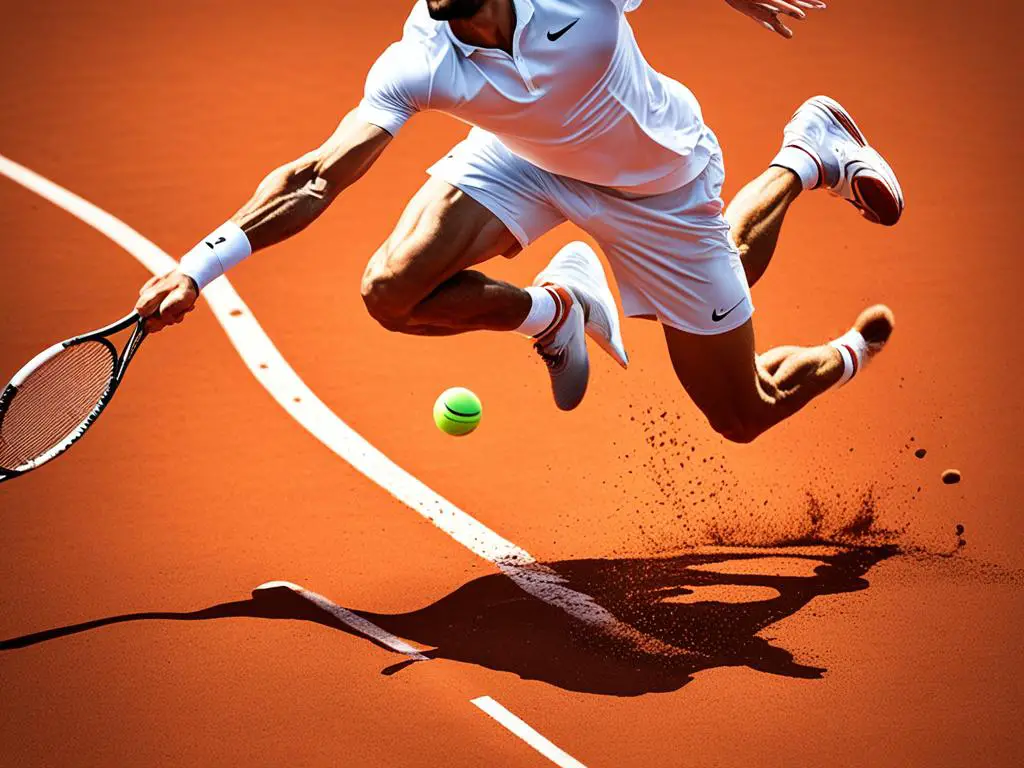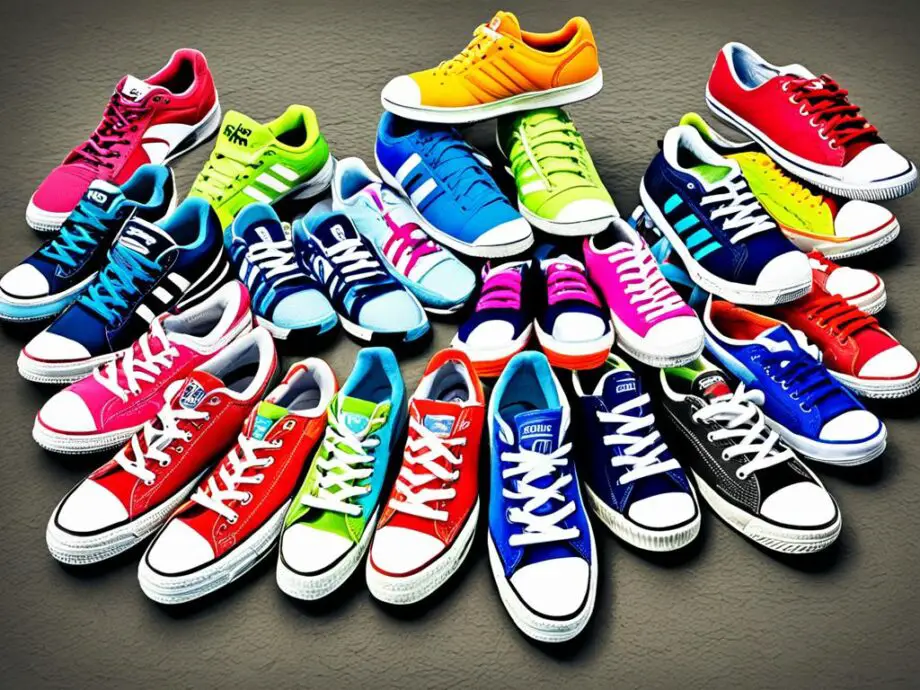If you’re a tennis player, you know how important it is to have the right footwear for the court surface you play on. Clay courts and hard courts have distinct characteristics that require specific shoes to optimize your performance and prevent injuries.
In this article, we will compare clay court shoes and hard court shoes to help you choose the best footwear for your tennis game. We will explore their performance, durability, and suitability for different court surfaces. So whether you’re playing on clay or hard courts, this guide will help you make an informed decision.
Key Takeaways:
- Understanding the differences between clay court shoes and hard court shoes is crucial in selecting the right tennis shoes for your game.
- Clay court shoes are designed with a specific outsole and profile to enhance traction and stability on clay courts, allowing for quick movements and slides.
- Hard court shoes prioritize cushioning and shock absorption to minimize joint impact on the unforgiving hard court surface.
- Choosing the appropriate shoes based on the primary surface you play on will optimize your performance and prevent slipping or injuries.
- While clay court shoes may wear out more quickly, proper maintenance and cleaning of both types can extend their lifespan.
Understanding Clay Court Shoes
When it comes to playing tennis on clay courts, having the right shoes is crucial for optimal performance. Clay court shoes are specifically designed to provide excellent traction, stability, and protection on the loose clay surface. Let’s take a closer look at what makes these shoes the best choice for clay court play.
One of the key features of clay court shoes is the outsole, which is designed with a herringbone or modified herringbone pattern. This pattern helps to grip the clay surface, allowing players to make quick and precise movements without slipping. The enhanced traction provided by these shoes gives players the confidence to slide and change directions with ease.
Additionally, clay court shoes typically have a slightly higher profile than other tennis shoes. This higher profile helps to protect against sliding and provides stability during rapid lateral movements. The added support and stability contribute to a player’s overall performance and reduce the risk of injuries on clay courts.
So, if you’re an avid clay court player, investing in a pair of clay court shoes is a smart choice. These shoes are specifically engineered to enhance your performance on clay courts, providing the necessary traction, stability, and protection. With clay court shoes, you can confidently slide, change directions quickly, and dominate the game.

Benefits of Clay Court Shoes:
- Excellent traction on loose clay surface
- Enhanced stability during lateral movements
- Protects against sliding
- Allows for quick changes in direction
Notable Features of Clay Court Shoes:
| Feature | Description |
|---|---|
| Outsole | Herringbone or modified herringbone pattern for superior grip |
| Profile | Slightly higher to provide stability during lateral movements |
Exploring Hard Court Shoes
When it comes to playing on hard court surfaces such as concrete or asphalt, having the right footwear is crucial. That’s where hard court shoes come in. Designed to withstand the rigors of hard courts, these shoes offer the necessary features to enhance your performance and protect your feet.
Hard court shoes are equipped with a durable outsole that provides excellent traction and stability on hard surfaces. Whether you’re making quick lateral movements or sprinting to reach a shot, these shoes offer the grip you need to stay in control of your game.
In addition to traction, hard court shoes prioritize cushioning and shock absorption to minimize the impact on your joints. With the unforgiving nature of hard court surfaces, it’s essential to protect your feet and reduce the risk of injuries. The cushioning technology in hard court shoes helps to absorb the shock and provide the necessary support for your feet.
When choosing hard court shoes, consider the level of cushioning that suits your playing style and preferences. Some players prefer more cushioning for added comfort, while others may prioritize a firmer feel for better court feel and responsiveness.

“Hard court shoes are a game-changer when it comes to playing on unforgiving surfaces. The combination of traction, stability, and cushioning makes them ideal for hard court play, allowing players to perform at their best while minimizing the risk of injuries.” – Tennis Pro
Durability and Care
Hard court shoes are designed to endure the demanding conditions of hard court surfaces. The durable materials used in their construction prolong their lifespan and ensure they can withstand the abrasive nature of concrete or asphalt.
To maintain the longevity of your hard court shoes, it’s important to follow proper care and maintenance routines. Regularly clean the outsole to remove any residue or dirt that may affect traction. Additionally, inspect the shoe’s upper for wear and tear, and consider replacing them when necessary to avoid compromising performance.
| Pros of Hard Court Shoes | Cons of Hard Court Shoes |
|---|---|
| Excellent traction on hard surfaces | Less suitable for clay or grass courts |
| Superior stability for aggressive movements | May feel less cushioned compared to clay court shoes |
| Absorb impact and reduce the risk of injuries | Require proper care and maintenance for longevity |
Performance on Different Surfaces
When comparing clay court shoes vs hard court shoes, it’s important to consider how they perform on different surfaces. The performance of tennis shoes can greatly impact a player’s ability to move, slide, and react on the court. Let’s take a closer look at how clay court shoes and hard court shoes fare on their respective surfaces.
Clay Court Shoes
Clay court shoes are specifically designed to excel on clay courts, which are characterized by their loose and slippery surface. These shoes feature a unique outsole pattern, often herringbone or a modified herringbone, that provides exceptional traction on the clay surface. This enhanced grip allows players to maintain control while sliding and executing quick changes in direction. The design of clay court shoes also takes into account the need for stability during lateral movements, ensuring players can confidently navigate the court.
Hard Court Shoes
Hard court shoes, on the other hand, are engineered to endure the demands of playing on hard surfaces like concrete or asphalt. These shoes are equipped with durable outsoles that offer reliable traction and stability on hard courts. The emphasis of hard court shoes lies in cushioning and shock absorption to minimize the impact on joints and reduce the risk of injuries. The design features provide the necessary support for the aggressive movements and constant impact that hard court play entails.

When it comes to performance on different surfaces, clay court shoes excel in providing excellent grip and maneuverability on clay courts, making them the preferred choice for players who frequent this surface. Hard court shoes, on the other hand, prioritize stability and support to help players navigate the challenging demands of playing on hard surfaces with confidence.
Choosing the Right Tennis Shoes
When it comes to choosing the right tennis shoes, considering the primary surface you play on is crucial for optimal performance on the court. Whether you primarily play on clay courts or hard courts, selecting the appropriate footwear can make a significant difference in your game. Let’s explore the advantages of each type of shoe to help guide your decision-making process.
Clay Court Shoes
If clay courts are your go-to playing surface, investing in clay court shoes is highly recommended. These shoes are specifically designed to excel on clay courts, offering enhanced performance and preventing slipping. The herringbone or modified herringbone outsole pattern delivers exceptional traction, allowing you to move swiftly and change directions effortlessly. Additionally, the slightly higher profile of clay court shoes provides the needed stability during quick lateral movements.
Hard Court Shoes
For players who predominantly play on hard courts, hard court shoes are the ideal choice. These shoes are built to withstand the rigors of concrete or asphalt surfaces. With a durable outsole, hard court shoes offer excellent traction and stability on hard courts, minimizing the risk of slipping. They prioritize cushioning and shock absorption to provide optimal comfort and reduce the impact on your joints, ultimately reducing the risk of injuries on the unforgiving hard surface.
Whether you opt for clay court shoes or hard court shoes, it’s essential to consider the demands of your primary playing surface. The right tennis shoes can enhance your game by providing the necessary support, traction, and cushioning, allowing you to perform at your best.
Now that we have explored the differences between clay court shoes and hard court shoes, you can make an informed decision based on your specific needs and playing style. Remember to prioritize factors such as stability, traction, cushioning, and durability when choosing the right tennis shoes for your game. By selecting the appropriate footwear for your primary playing surface, you can optimize your performance and enjoy a comfortable and injury-free tennis experience.
Durability on Various Courts
When it comes to the durability of tennis shoes, the type of court you play on can significantly impact their lifespan. Clay court shoes and hard court shoes are designed to withstand the specific demands of their respective surfaces.
Clay Court Shoes
Clay court shoes are specially engineered to perform optimally on clay courts. However, due to the abrasive nature of clay, these shoes tend to wear out more quickly compared to their hard court counterparts. The small particles of clay can get trapped in the shoe’s crevices, affecting the traction and grip.
Hard Court Shoes
On the other hand, hard court shoes are built to withstand the rigors of hard court surfaces such as concrete or asphalt. They are designed with durable outsoles that provide excellent traction and stability on hard courts. These shoes prioritize cushioning and shock absorption to minimize the impact on joints and reduce the risk of injuries on the unforgiving surface.
Proper maintenance and cleaning are essential for extending the lifespan of both clay court and hard court shoes. Regularly removing dirt, dust, and clay particles from the shoes can help preserve their performance and durability over time.
Conclusion
Choosing the right shoes for your tennis game is crucial not only for optimal performance but also for injury prevention. Understanding the differences between clay court shoes and hard court shoes can guide you in selecting the best option based on the primary playing surface you frequent.
When deciding between clay vs hard court shoes, consider key factors such as traction, stability, cushioning, and durability. Clay court shoes are designed to excel on clay surfaces, featuring specialized outsoles for enhanced grip and the right profile to prevent sliding. On the other hand, hard court shoes prioritize durability and shock absorption to withstand the demanding nature of concrete or asphalt courts.
It’s important to note that clay court shoes may wear out more quickly due to the gritty texture of clay, while hard court shoes are built to last longer on hard surfaces. However, regular maintenance and cleaning can help extend the lifespan of both types of tennis shoes, ensuring continued performance and longevity.
Regardless of whether you play on clay or hard courts, making an informed decision about your tennis footwear is instrumental in maximizing your potential on the court. By considering the unique characteristics and requirements of each surface, you can choose shoes that provide the necessary support, comfort, and durability, allowing you to stay agile, confident, and injury-free while enjoying your tennis game.
